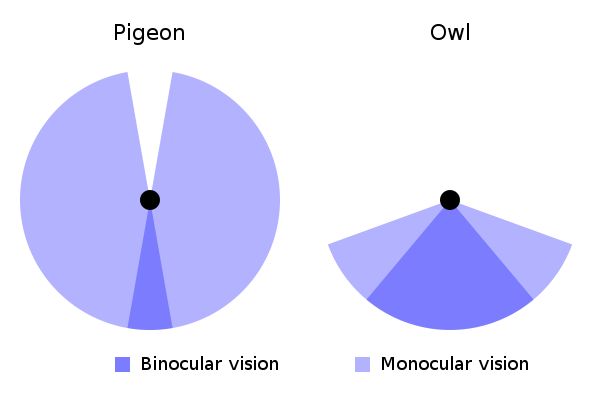
Several weeks ago I declared an end to my Friday bird anatomy series but this interesting diagram has prompted an unscheduled lesson.
Field of view is the angular extent of vision at any given moment. It’s basically “all you can see without moving your eyes.”
Prey species, like pigeons and robins, usually have a very wide field of view because they need to see danger coming from any direction. To achieve this most of their vision is monocular, like our peripheral vision, with only a narrow angle of binocular vision with good depth perception. It’s so important for them to see what’s coming that some prey species can move each eye independently!
As shown above a pigeon can see nearly 360 degrees around its head, a real advantage when avoiding a peregrine.
Predator species usually have a narrower field of view because they need to have good depth perception in order to capture prey. The owl’s field of view is more like ours with a wide area of binocular vision and narrow bands of peripheral, monocular vision on either side.
Peregrines and people have fields of view similar to the owl’s. Ours is actually wider than the diagram. We can see 180 degrees.
Here’s how to find your field of view, which is basically a test of your peripheral vision. Hold up your index finger in front of your nose and close one eye. While looking straight ahead, move that finger around your head toward the ear near your open eye. When you can no longer see your finger, that’s where your field of view ends.
Now find out where your binocular vision ends. Open your closed eye, close your open eye (i.e. switch eyes). Look straight ahead and move your finger in the same direction as before. When you can no longer see your finger, that’s where your binocular vision ends.
Of course, these tests only work if you have good vision in both eyes.
(illustration from Wikimedia)
cool eye test kate!!! just glad no one stopped in my office while i was ‘testing’! thanks